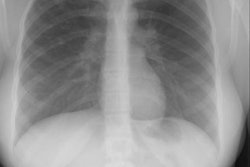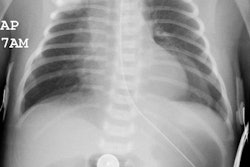Williams-Campbell Syndrome:
View cases of Williams-Campbell syndrome
Clinical:
A rare congenital deficiency of bronchial cartilage involving the 2-nd or 3-rd through 6-th generation bronchi. The structural integrity of the trachea, main, and more proximal lobar bronchi is maintained. Patients typically present in childhood with cough, wheezing, and recurrent respiratory illnesses. The long term prognosis is variable with rapid clinical deterioration and death in some children, and prolonged survival in others- in fact, the clinical status of the patient may improve with time.X-ray:
Plain films will demonstrate multiple thin-walled spherical lucencies within the middle and lower lung zones. The cysts may contain air-fluid levels. The lungs are hyperinflated. HRCT findings include cystic bronchiectasis distal to the third generation bronchi. Due to the lack of cartilgenous support, the overly compliant bronchial wall collapses during expiration with distal air trapping (resulting in hyperinflation).REFERENCES:
(1) AJR 1995; McAdams HP, et al. Chest case of the day: Williams-Campbell
syndrome. 165 (1): 190-191 (No abstract available)
(2) J Comput Assist Tomogr 1987; Watanabe Y, et al. Congenital bronchiectasis
due to cartilage deficiency: CT demonstration. 11(4): 701-703 (No abstract
avaiable)




